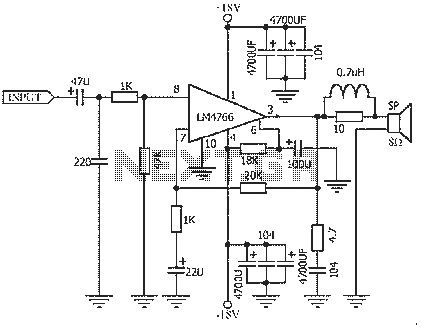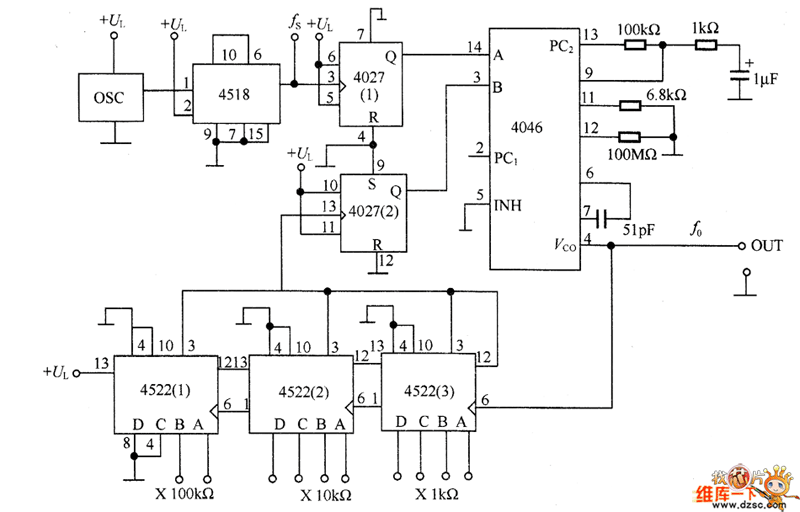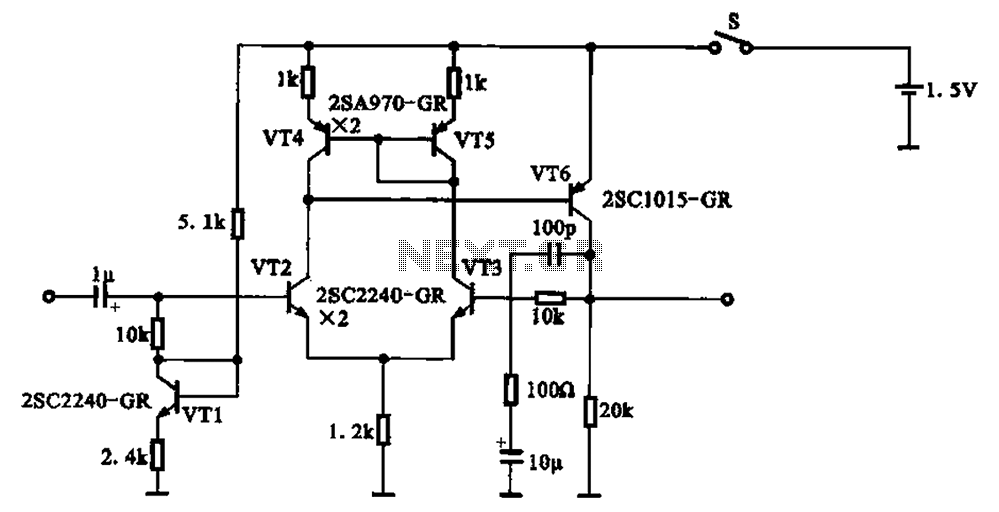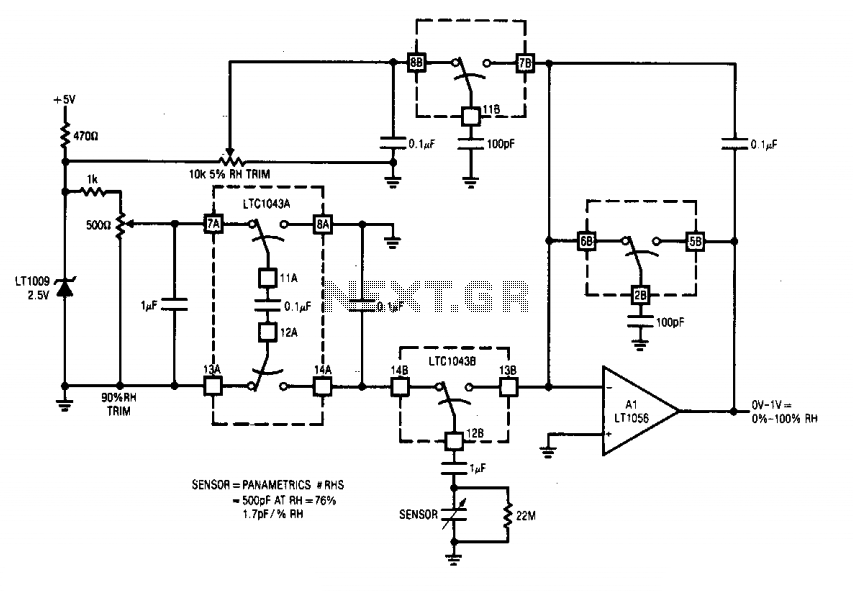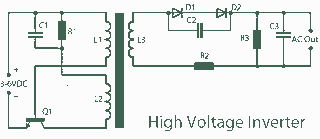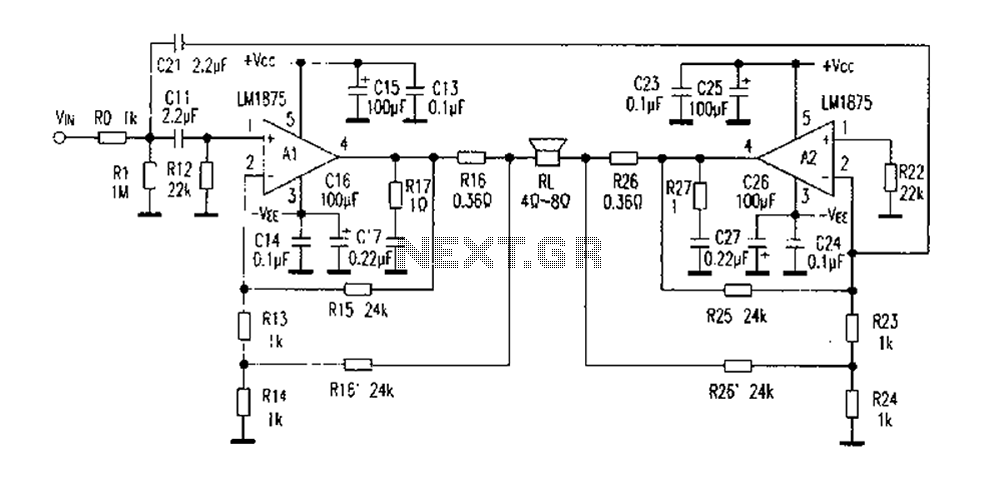
Inductorless Power Supply Converter Circuit
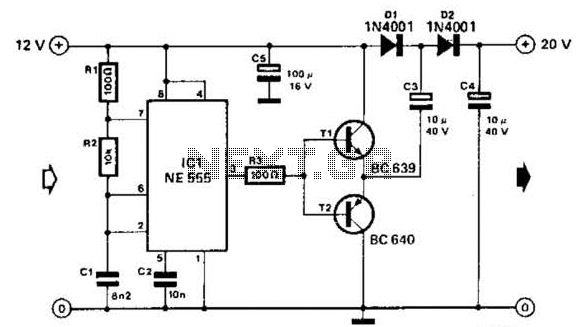
Using a 555 timer and voltage doubler, this circuit will supply over 50 mA at 20 V DC. Transistors T1 and T2 act as power amplifiers to drive the voltage doubler. The frequency of operation is approximately 8.5 kHz.
The circuit described utilizes a 555 timer configured in astable mode to generate a square wave signal at a frequency of approximately 8.5 kHz. This oscillating signal serves as the clock input for the subsequent stages of the circuit. The 555 timer is powered by a DC voltage source, and its output is connected to the bases of two transistors, T1 and T2. These transistors are configured as a push-pull amplifier stage, effectively boosting the current output of the 555 timer.
The amplified output from the transistors drives a voltage doubler circuit, which typically consists of two diodes and two capacitors. The voltage doubler works by charging the capacitors during the positive half-cycle of the input signal, and then stacking the voltages during the negative half-cycle, thereby effectively doubling the input voltage. The result is a DC output voltage of approximately 20 V, capable of supplying more than 50 mA of current, making it suitable for various applications requiring higher voltage and moderate current.
It is essential to ensure that the transistors used in the circuit can handle the required current and voltage levels. Additionally, proper heat dissipation measures should be considered to prevent thermal overload. The choice of capacitors in the voltage doubler must also account for their voltage ratings and capacitance values to ensure stable operation and minimal ripple in the output voltage. Using a 555 timer and voltage doubler, this circuit will supply >50mA at 20 Vdc. Tl and T2 act as power amplifiers to drive the voltage doubler. Frequency of operation is approximately 8.5 kHz. 🔗 External reference
The circuit described utilizes a 555 timer configured in astable mode to generate a square wave signal at a frequency of approximately 8.5 kHz. This oscillating signal serves as the clock input for the subsequent stages of the circuit. The 555 timer is powered by a DC voltage source, and its output is connected to the bases of two transistors, T1 and T2. These transistors are configured as a push-pull amplifier stage, effectively boosting the current output of the 555 timer.
The amplified output from the transistors drives a voltage doubler circuit, which typically consists of two diodes and two capacitors. The voltage doubler works by charging the capacitors during the positive half-cycle of the input signal, and then stacking the voltages during the negative half-cycle, thereby effectively doubling the input voltage. The result is a DC output voltage of approximately 20 V, capable of supplying more than 50 mA of current, making it suitable for various applications requiring higher voltage and moderate current.
It is essential to ensure that the transistors used in the circuit can handle the required current and voltage levels. Additionally, proper heat dissipation measures should be considered to prevent thermal overload. The choice of capacitors in the voltage doubler must also account for their voltage ratings and capacitance values to ensure stable operation and minimal ripple in the output voltage. Using a 555 timer and voltage doubler, this circuit will supply >50mA at 20 Vdc. Tl and T2 act as power amplifiers to drive the voltage doubler. Frequency of operation is approximately 8.5 kHz. 🔗 External reference
